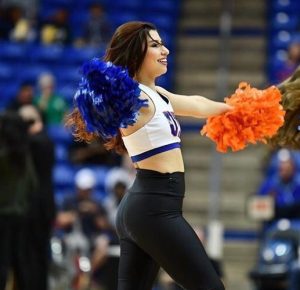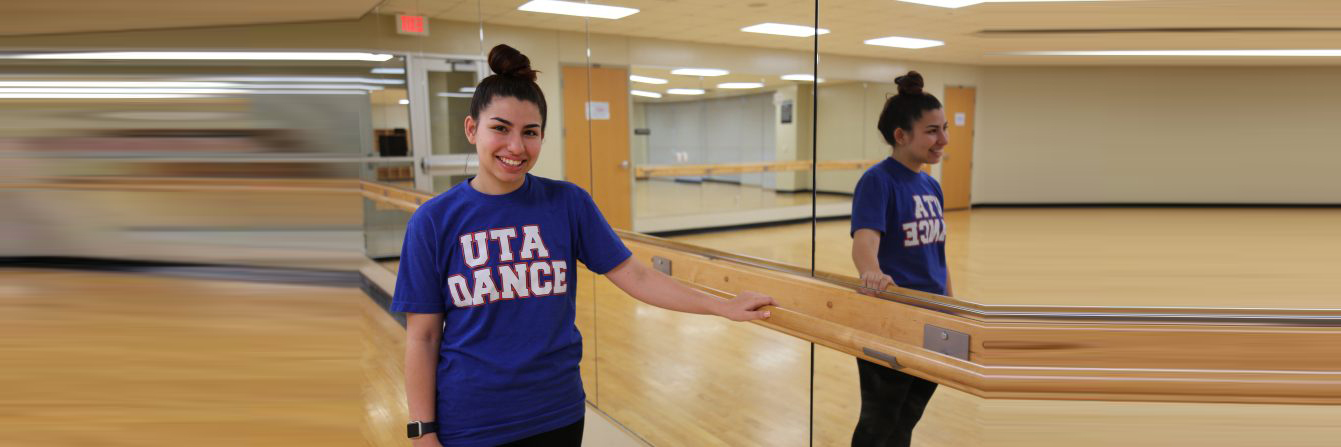Alyssa Rodriquez decided that arthroscopic surgery on her torn meniscus gave her the greatest chance of getting back to dancing competitively.
Alyssa Rodriguez has been dancing most of her life. Some of her fondest childhood memories were inside a dance studio. She had her first major injury at the age of 13 with a torn meniscus.
“I was still dancing, walking and doing everything, and I didn’t know it was torn,” Rodriguez said.
A torn meniscus is a common knee injury in any physical activity. Dancers often experience this type of injury if they forcefully twist or rotate the knee while putting their full body weight on the joint. It can cause pain, swelling and stiffness. In some cases, it can require surgical repair.
“Physical therapy helped. When it hurt during dance practice, I would rest my knee and ice it. I got used to the pain and inconvenience but kept on dancing,” Rodriguez added.
Now as a junior on The University of Texas at Arlington Mavericks Dance Team, she practices with her squad four to five days a week, performs at games and various community events.
The latest injury
In July 2018, Rodriguez was practicing with her squad in preparation for the National Dance Alliance camp when her left knee started bothering her. She thought it would get better after some rest.
“The next day I was dancing and after the third time of twisting to the ground, I couldn’t do it anymore,” Rodriguez remembered. “It hurt that bad. I knew something was wrong. I couldn’t bend my knee all the way or keep it straight. It even hurt to do a squat.”
Rodriguez scheduled an appointment with Lindsey Dietrich, M.D., an orthopedic surgeon and sports medicine specialist on the medical staff at Texas Health Arlington and Sideline Orthopedics and Sports, a Texas Health Physicians Group practice.
“Alyssa was clearly a dedicated athlete and when rehabilitation wasn’t working, and she couldn’t dance, we decided together that she should get an MRI,” said Dietrich “We reviewed her treatment options and determined that arthroscopic surgery on her meniscus had the greatest chance of getting her back to dancing at her competitive level.”
“The meniscus serves as a shock absorber in the knee. When a meniscus is torn, it may cause pain, swelling, and popping that prevents you from being active. The goal of meniscus surgery is not only to deal with the painful torn portion, but also to preserve and protect as much healthy cartilage in the knee as is possible. In some cases, as with Alyssa, we can simply trim the torn piece to provide symptom relief. This is called a meniscectomy, and in most instances we are able to tackle recovery aggressively and get an athlete back to their sport in one to two months,” Dietrich added.
The recovery

Rodriguez was able to put weight on her knee three days after surgery and start physical therapy.
“Getting mobility back into my leg was my biggest challenge,” Rodriguez said.
For nearly three months, Rodriguez watched her squad practice and perform as she sat on the sidelines. She says she’s very grateful for their understanding of her injury. “They understood that I wanted to dance — I was just physically unable to do so.”
Rodriguez is now fully recovered and working with her team to learn a new routine for the National Dance Alliance Championship in Dayton Beach, Florida. She says she’s looking forward to representing UTA at the competition in April of this year.
“I have to be more cautious since my surgery, so I don’t injure myself again,” Rodriguez said. “But I’m ready to compete and be there for my team.”
Find a sports medicine physician to address your orthopedic needs.

